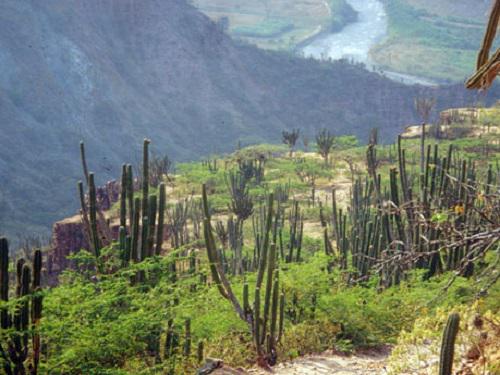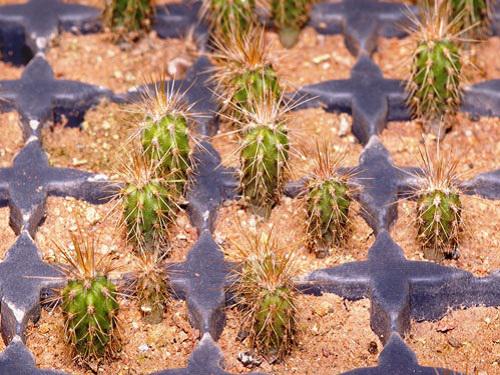Daniel Marcelo Larrea Alcazar
In this work, we are evaluating the spatial association among long-lived columnar cacti and mimosoid shrubs in two contrasting semiarid landscapes (mesic and xeric sites), as well as the ecological process that could explain these plant-plant interactions.

The importance of facilitation as key driver of plant community composition and dynamic of arid environments has been newly appreciated. Positive interactions between columnar cacti and mimosoid plants have long been recognized as an important driving force in many temperate and extratropical arid communities; however, our knowledge on their variants in tropical arid ecosystem is still scarce. In fact, the characteristics of the interacting plant species and the importance of many animal species as consumers of fruits and/or cactus seeds make these tropical environments particularly distinct, suggesting the strength and importance of the plant-plant interactions can vary across of the tropical ecosystems.

The Andes of northern South America contain a set of dry valleys with climatic characteristics that result from orographic rainfall shadows. These semiarid valleys constitute an archipelago of small arid enclaves that occur from the Cordillera de Mérida (western Venezuela) to Ecuador through of Colombia mountain chains. Among them, the biggest enclave of Venezuelan Andes (locally known as Lagunillas) is an appropriate scenario to evaluate the occurrence and variations of the so-called nurse-plant phenomenon. If this occurs, these plant-plant interactions represent a good study system to determine the importance of some keystone plant species and demonstrate the fragility of these semiarid landscapes strongly affected by grazing by cows and goats and removal of taller thorny shrubs.
In this work, we are evaluating the spatial association among long-lived columnar cacti and mimosoid shrubs in two contrasting semiarid landscapes (mesic and xeric sites), as well as the ecological process that could explain these plant-plant interactions. Among them, the cactus seed rain generated by birds and bats, the seed predation by ants, the rates of seed germination and the early survival of seedlings are key components of our research. Based on the stress-gradient hypothesis (Bertness & Callaway 1994), we predicted that nurse plants would be more important in the more stressful habitats (xeric sites) than in more benign conditions (mesic sites). Besides, we expected to find evidence of spatial association suggesting the occurrence of the nurse syndrome through the semiarid enclave including the performance of the main columnar cacti species underneath of mimosoid shrubs canopies.